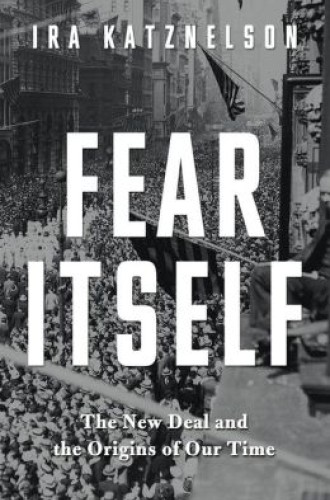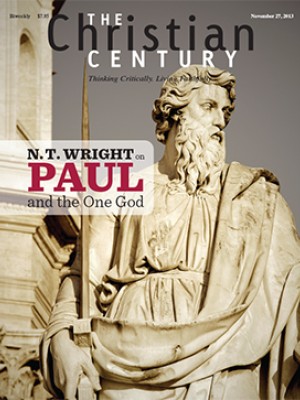How we got here
Eager to reassure a shaken public, President Franklin D. Roosevelt stretched the truth when he averred in his first inaugural address, “The only thing we have to fear is fear itself.” In reality, there was good reason to be afraid. The world economy remained in the deepest of doldrums, and societies across the globe were turning to dictators for answers. By the time Roosevelt assumed office on March 4, 1933, Hirohito, Mussolini and Stalin were already ruling with iron fists; and not three weeks later the Reichstag invested the power of the German state in Chancellor Adolf Hitler. Were liberal democracies ill equipped to manage a crisis of such magnitude? It was a genuine question, as Ira Katznelson underscores in this important and engrossing book.
Katznelson argues that the New Deal is what pulled the world back from the brink. To be clear, when Katznelson refers to the New Deal he does not have in mind just the alphabet soup of new federal agencies. He means the whole of U.S. policy, both foreign and domestic, in the era stretching from the election of FDR to the end of the Truman years.
Read our latest issue or browse back issues.
While his period covers presidential administrations, his story revolves around Congress. It was the country’s lawmakers, Katznelson contends, who proved that representative government could weather the worst of storms. As they seized the reins of the domestic economy and authorized new crusades abroad, legislators transformed both the nation and the world. The New Deal they enacted was a historical watershed “almost on a par with . . . the French Revolution.”
Yet this book is no homage. While insisting on the New Deal’s paramount significance, Katznelson also stresses its profound ambiguities. Many of these sprang from a “southern cage.” As he persuasively shows, the congregational delegation from the Jim Crow South wielded unmatched legislative clout throughout this era. Strong in numbers and fiercely devoted to segregation, this disciplined bloc could effectively veto any initiative.
On the domestic front, the implications for the shape of American capitalism were huge. Throughout the New Deal’s early and most radical phase, southern legislators were confident in the stability of the racial order and therefore had few qualms about expanding federal oversight of the economy, though they did take care to ensure that agricultural and domestic sectors that employed disproportionate numbers of African-American workers were excluded from new regulations.
By the 1940s, however, a number of factors had conspired to put Jim Crow on less sturdy footing, so its southern proponents reverted to a defensive mode. The more focused they became on preserving regional autonomy, the more they perceived enemies where they had once seen friends. In a number of the decade’s most important legislative battles, they championed legislation that weakened organized labor and demolished the federal role in economic planning.
The impact of their revolt remains with us to this day. Had the South voted differently or simply had fewer votes, Katznelson suggests, the United States might have ended up looking more like a European-style social democracy. As it was, the nation exited the New Deal era with a flagging commitment to the common good.
Dixie’s legacy for U.S. foreign policy was no less significant. Throughout these same decades the South doggedly advocated for a more assertive international presence. The region was ready to enter World War II long before the rest of the nation, and it was mainly thanks to the urging of its representatives that rearmament was already under way when the Japanese attacked Pearl Harbor. Yet as Katznelson aptly reminds us, the United States went to war not only against totalitarianism but also along with it. In order to defeat the Axis powers the country entered into a robust partnership with a Soviet regime that ranks among the most oppressive in all human history.
By war’s end, American hands were covered with blood. The gruesome slaughter of hundreds of thousands of German and Japanese civilians reached its climax with the instant incineration of some 210,000 people at Hiroshima and Nagasaki. Katznelson recounts that upon receiving news of the first atom bomb’s successful detonation, President Truman reveled, “This is the greatest thing in history.”
After the dust of war settled, southern legislators made sure that there would be no retreat into isolationism. Even as they sought to weaken the government at home, they were among the foremost architects of a new “crusading national security state” abroad. Katznelson astutely observes that the United States “projected might to advance democracy, but, in so doing, it often traduced liberty at home, and promoted authoritarian, often repressive, and sometimes murderous regimes elsewhere.” The New Deal was ambiguous indeed.
Fear Itself is both stunningly broad and surprisingly narrow in scope. Katznelson moves deftly between striking anecdotes and incisive analysis, demonstrating along the way his command of both the domestic and international scenes. Yet he never strays far from Capitol Hill. We get little sense here of what was going on at the grassroots level, among the people who sent these legislators to Washington in the first place.
But this is a small complaint about what is truly a masterful work. If you wonder whether politics matter, read this book. More than just a defining history of the New Deal, it is a penetrating look






